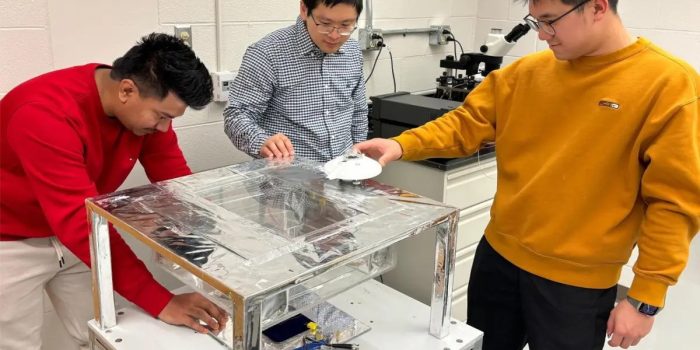Penn State University researchers have unveiled a pioneering creation dubbed the ‘dual-harvester’, which not only produces clean energy but also efficiently cools the Earth’s surface. This advanced device merges a solar cell with an innovative cooling technique called radiative cooling, resulting in over 30 percent energy savings compared to standard solar cells.
Radiative cooling is a natural process where objects emit thermal energy as infrared light, which escapes into space without warming the surrounding area. The Penn State team capitalized on this phenomenon by integrating it into their dual-harvester concept.
Linxiao Zhu, the team’s leader and assistant professor of mechanical engineering, elucidated that infrared light emanating from a transparent, low-iron glass surface reflects, traverses the atmosphere without heating it, and eventually disperses into the frigid universe.

Despite not directly generating energy, radiative cooling presents a sustainable substitute for traditional cooling methods like air-conditioning and refrigeration. This breakthrough builds upon Zhu’s earlier research in developing daytime radiative cooling, now under scrutiny as a zero-carbon cooling solution.
The team’s latest advancement involves a new ultrathin, transparent radiative cooler that allows most light to pass through it. Positioned above a solar cell, this cooler efficiently dissipates heat while enabling continuous electricity generation. Doctoral student Pramit Ghosh highlighted the cooler’s ability to reduce ambient air temperature by up to five degrees Celsius during the day, effectively functioning as a 24/7 natural air conditioner.

The integration of dual-energy harvesters offers several advantages. Firstly, both components occupy the same space and operate seamlessly together, regardless of the time of day. Secondly, the system is versatile and can be deployed on rooftops or the ground, similar to traditional solar panels.
Experimental tests conducted by the researchers underscored the potential of this dual-harvester system to outperform standalone solar cells. By leveraging both clean energy generation and surface cooling, this innovation represents a significant step forward in renewable energy technology. With further development and deployment, it holds promise for mitigating climate change and reducing energy consumption in various applications.


